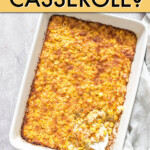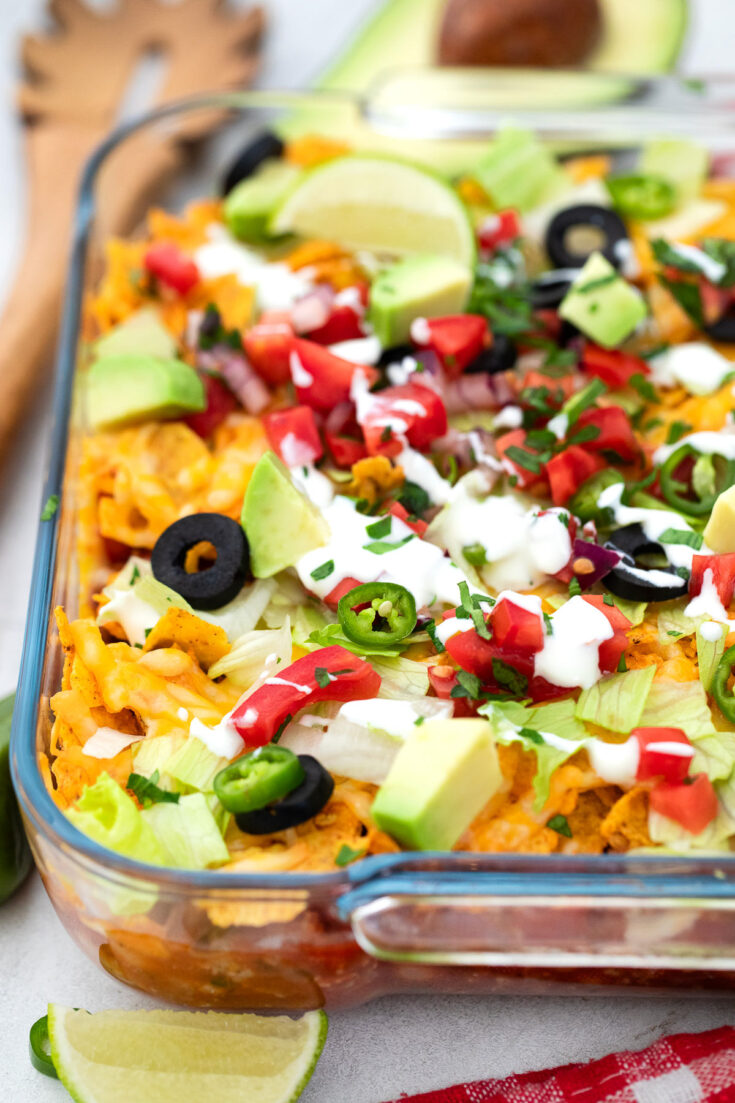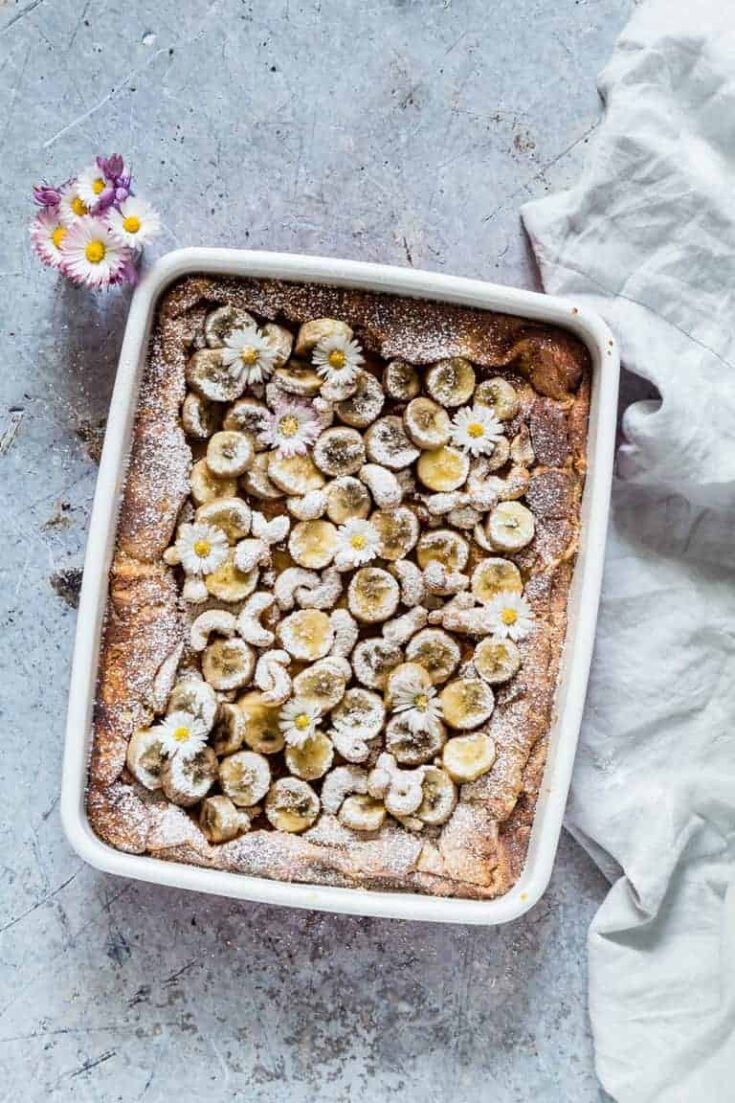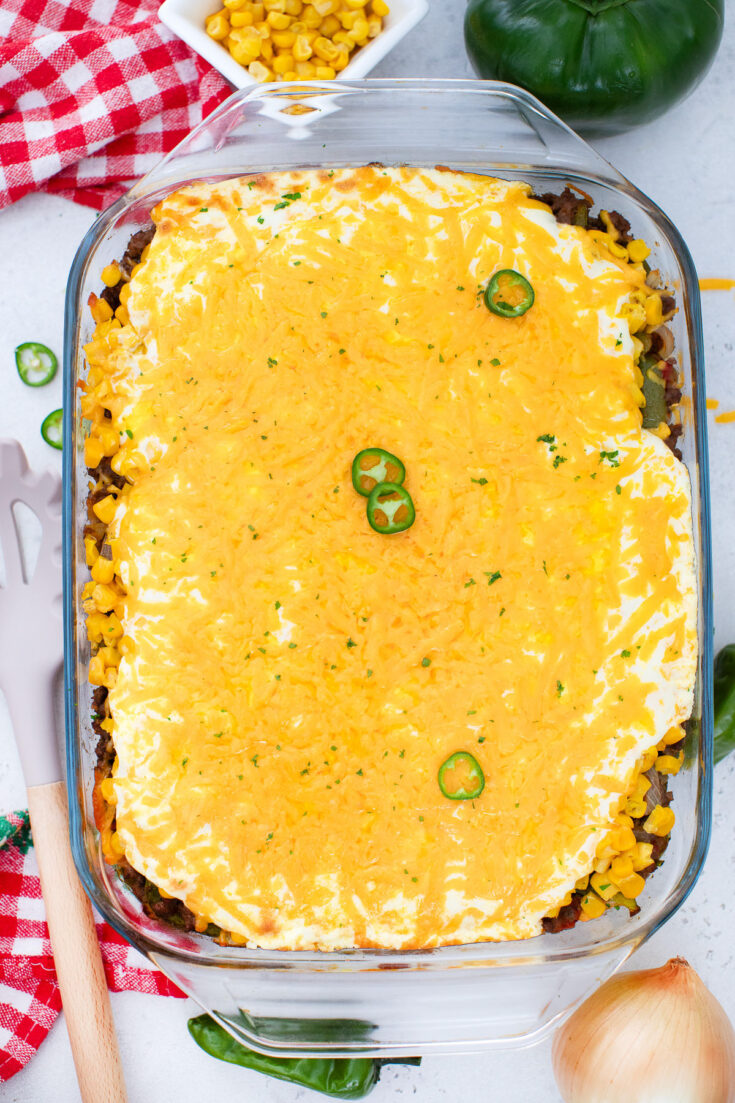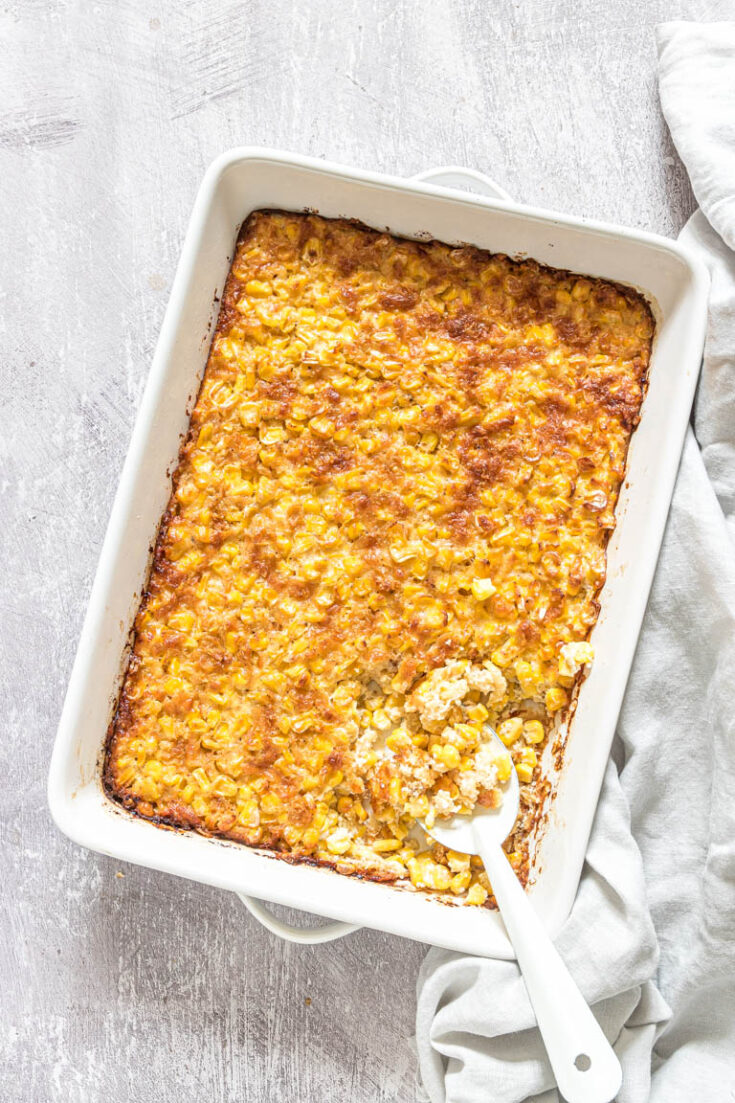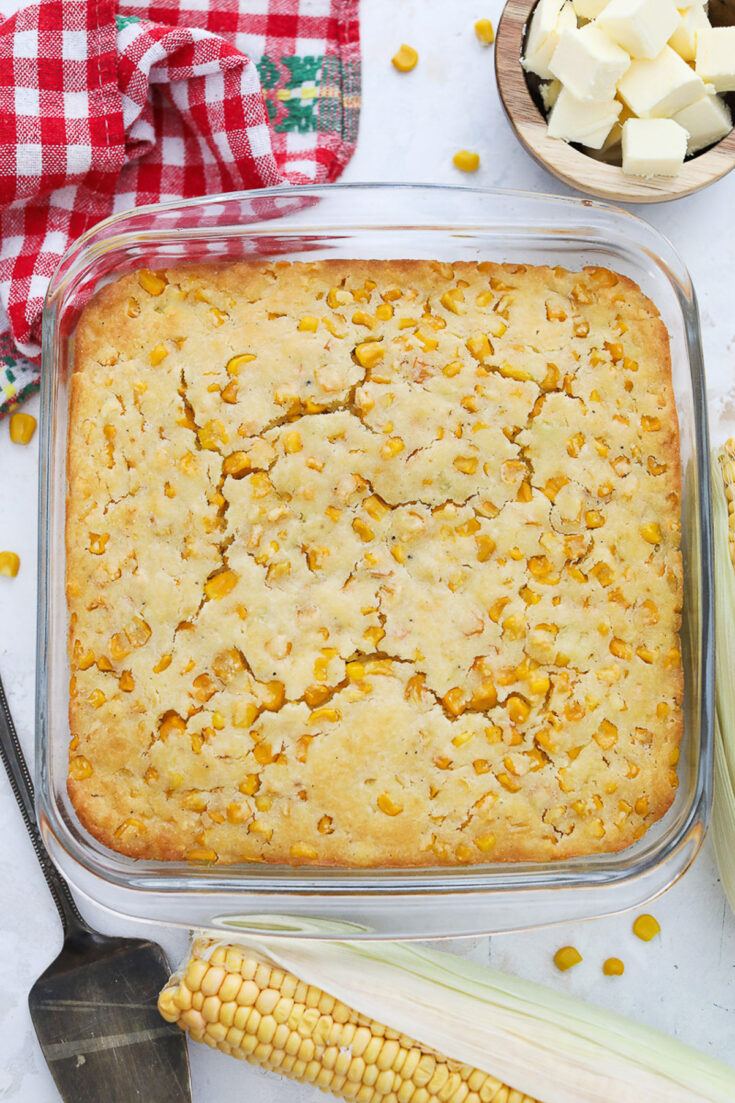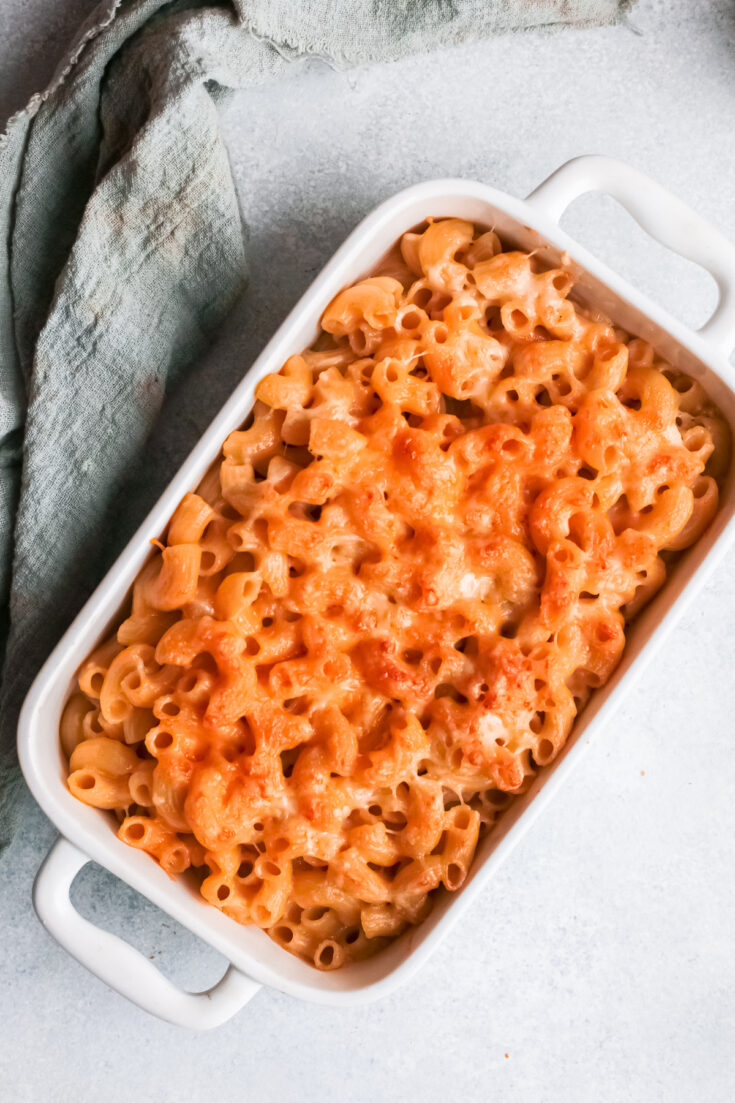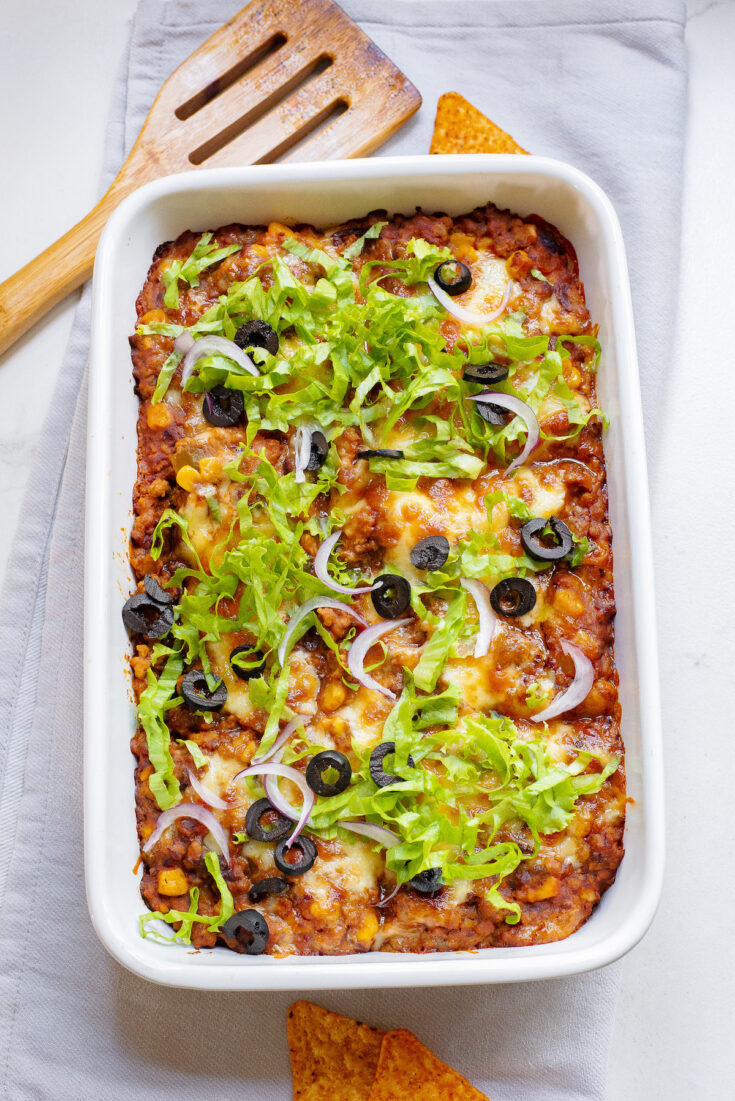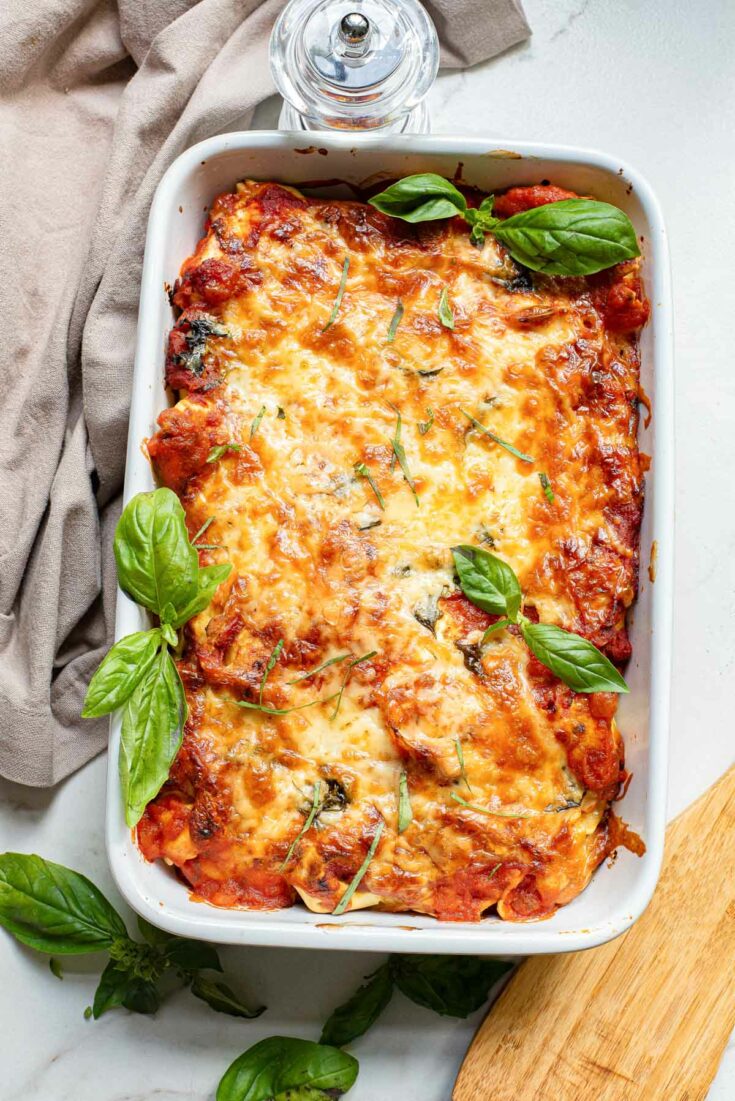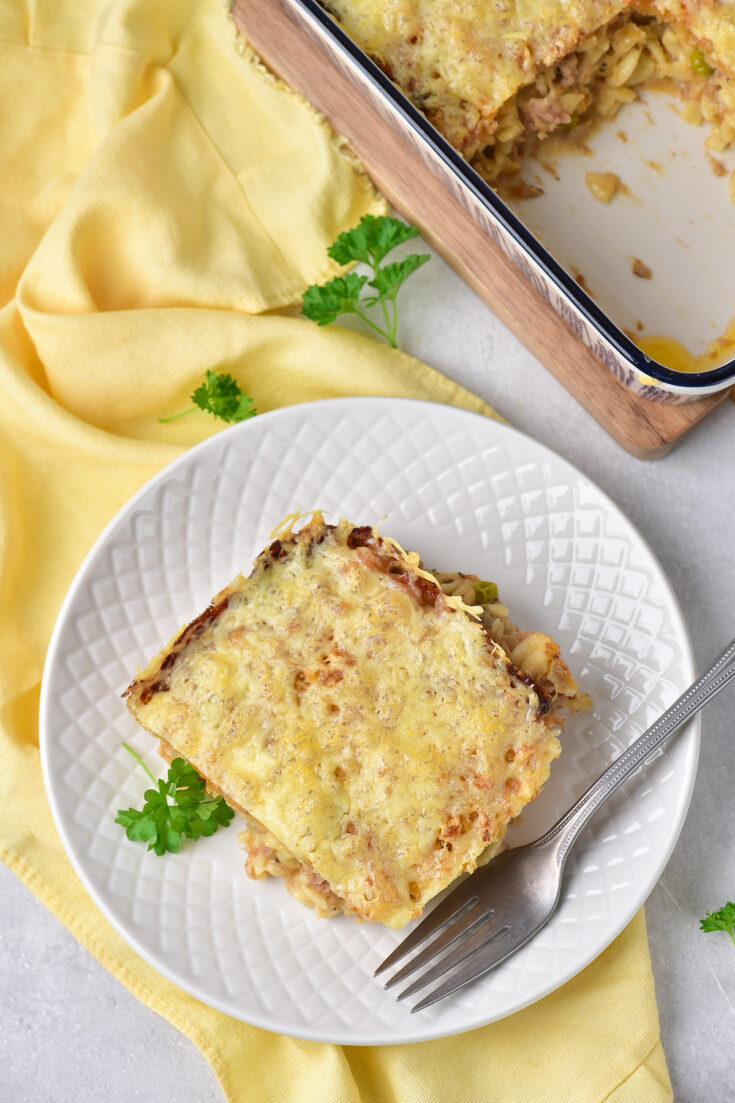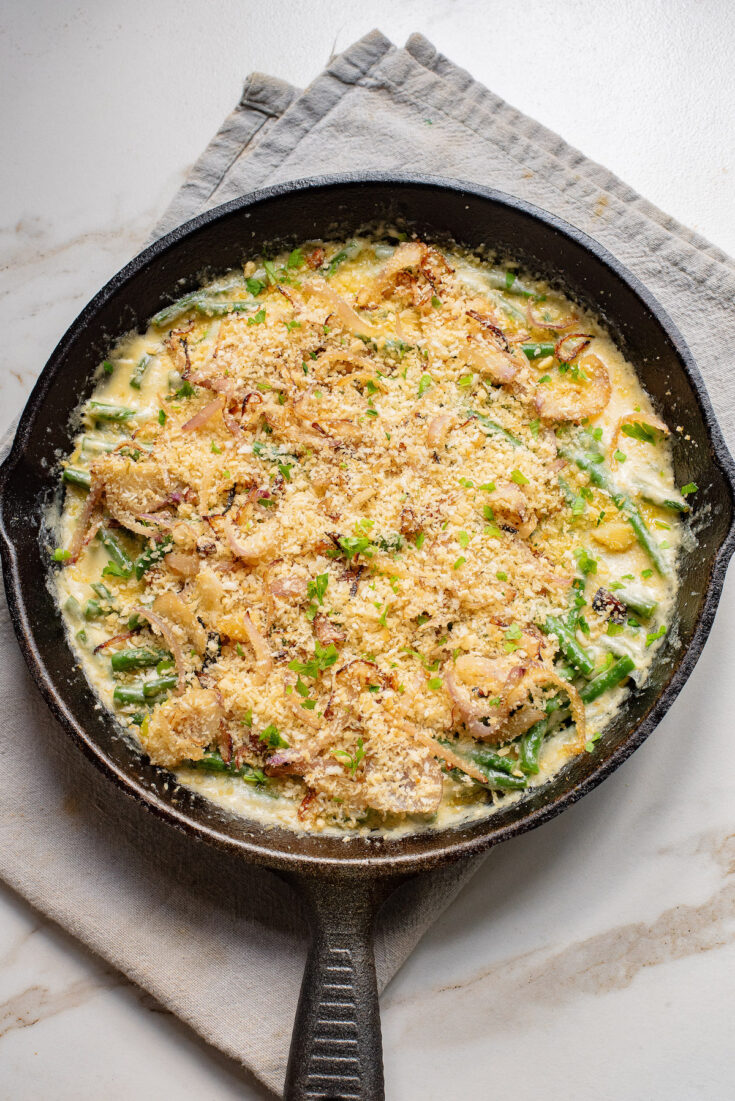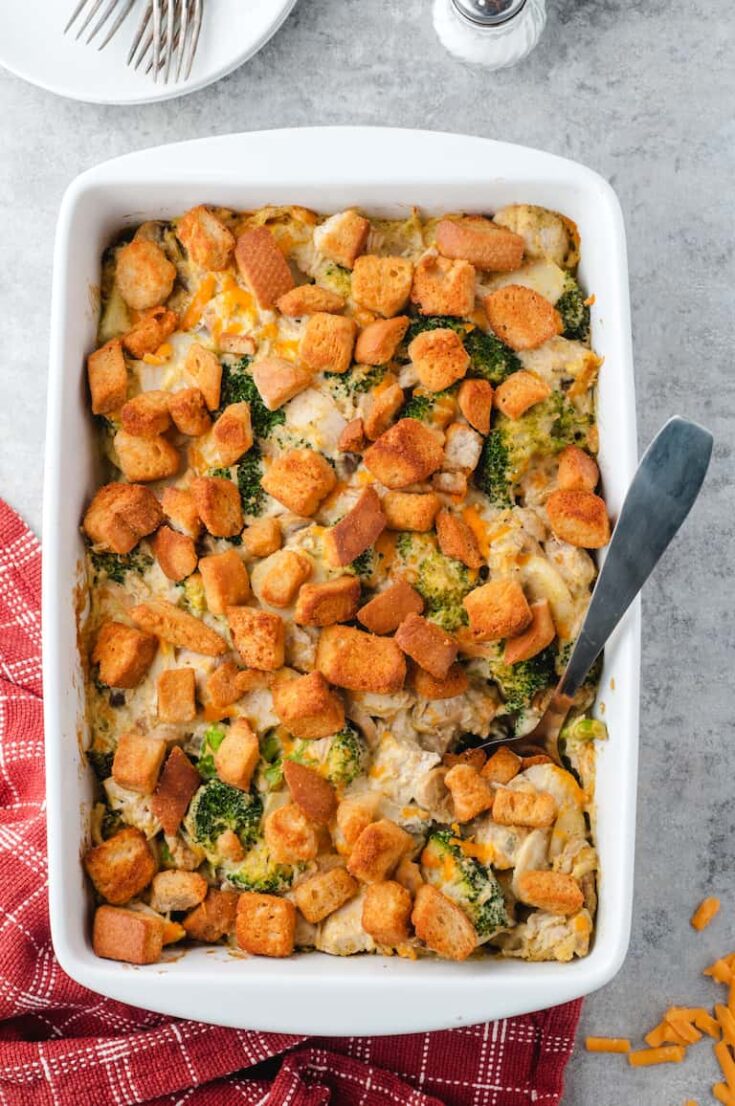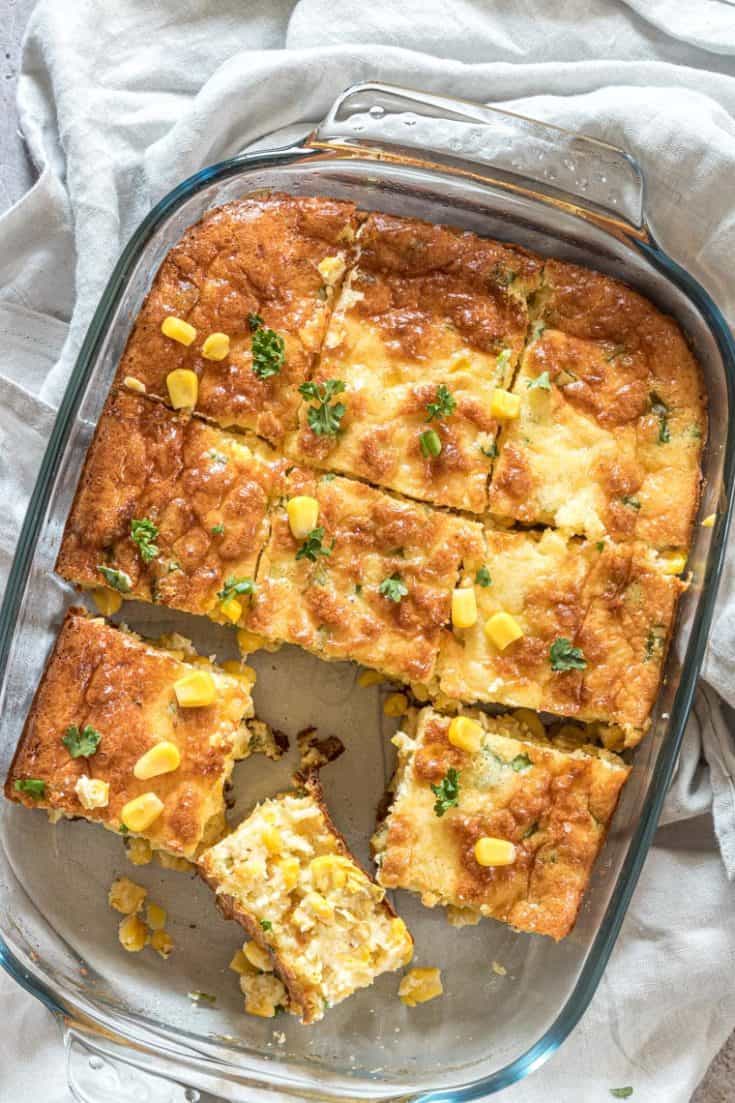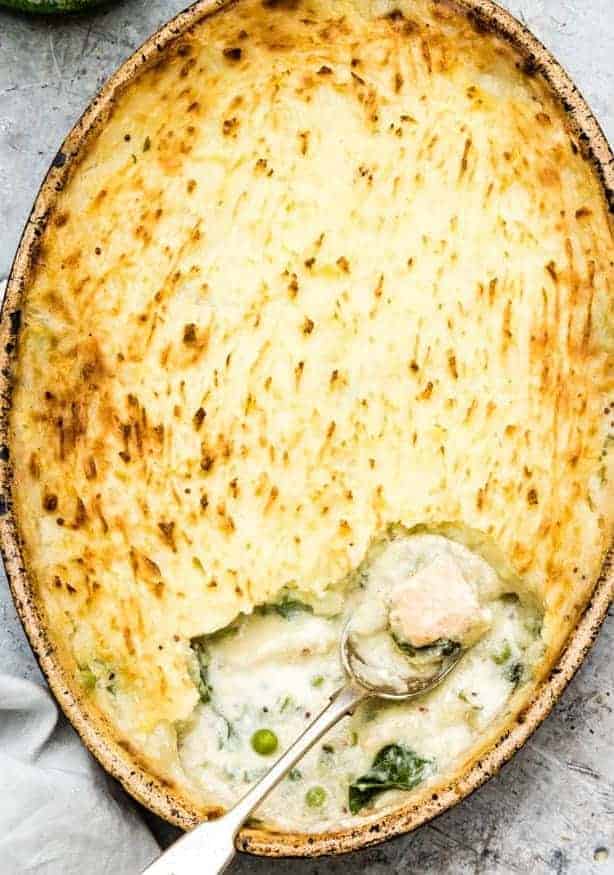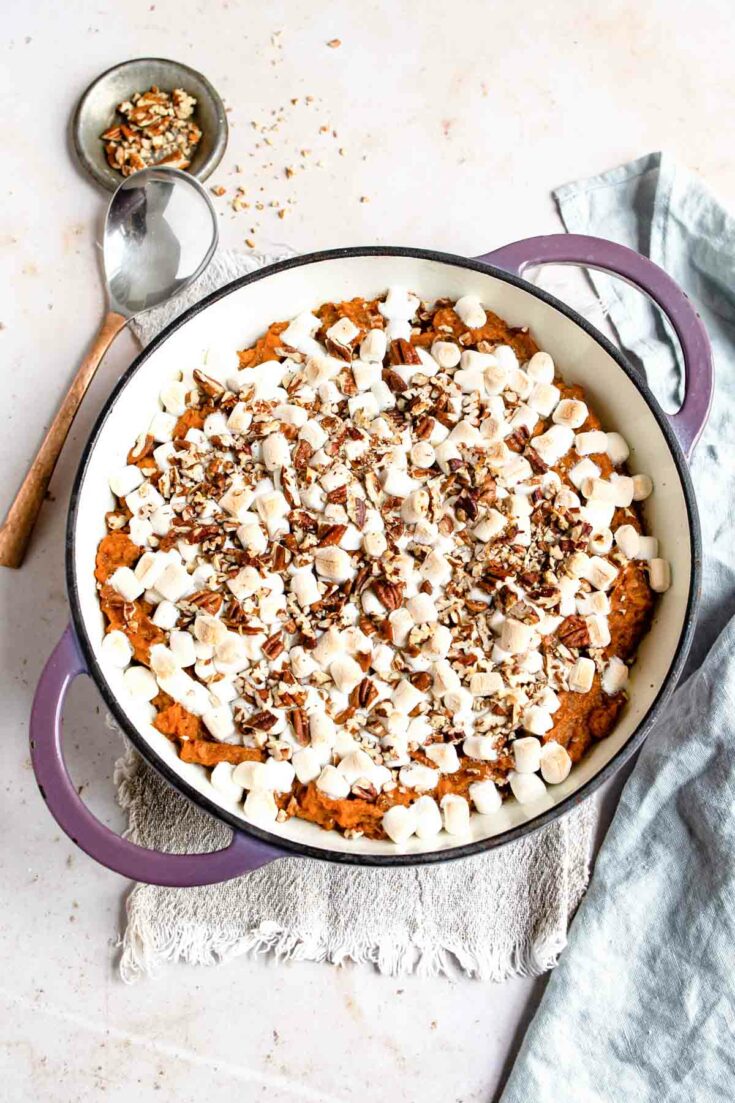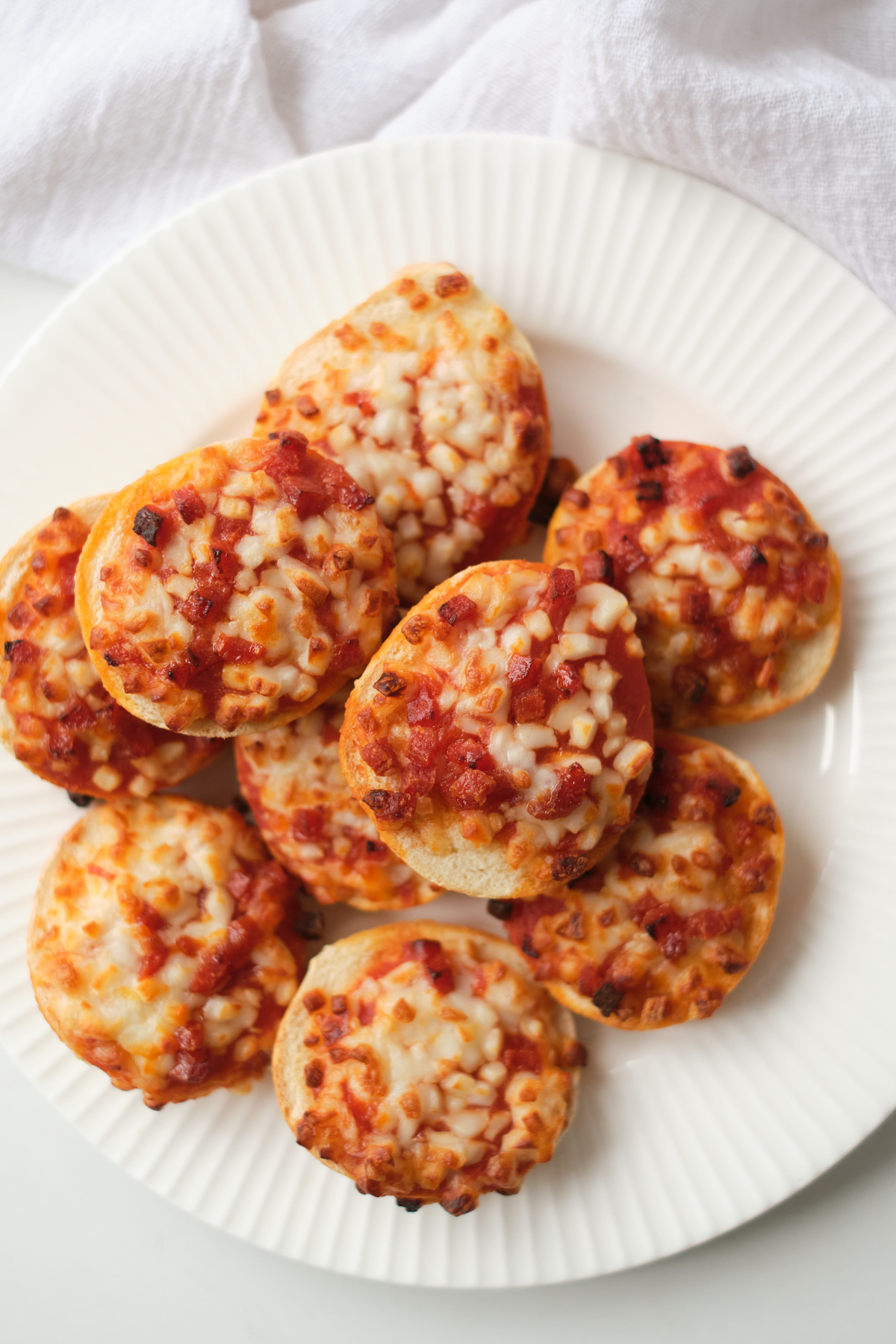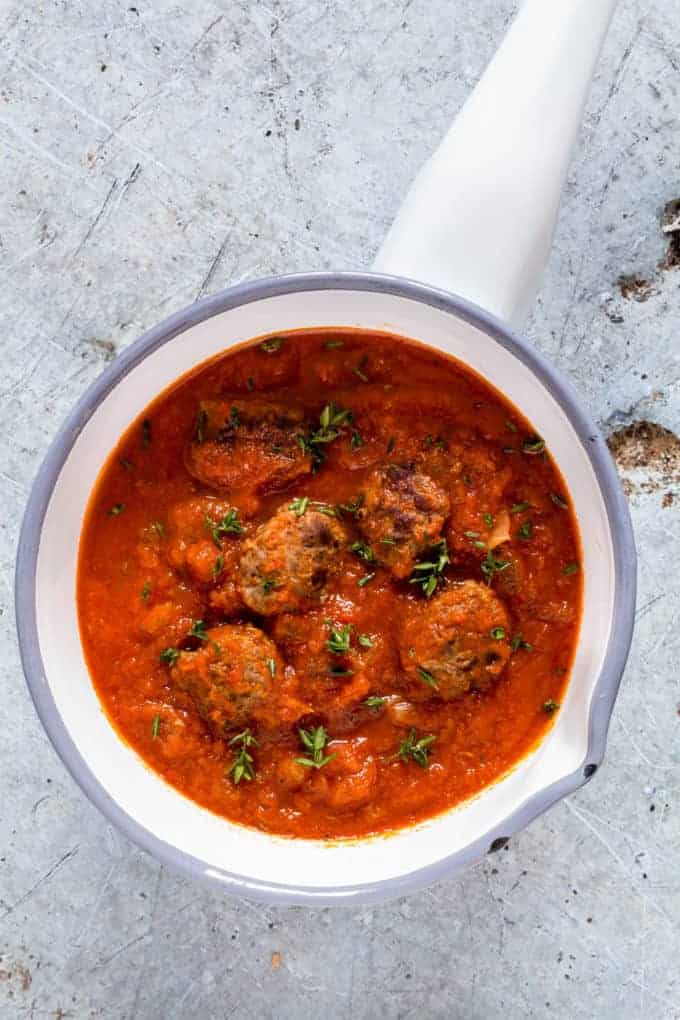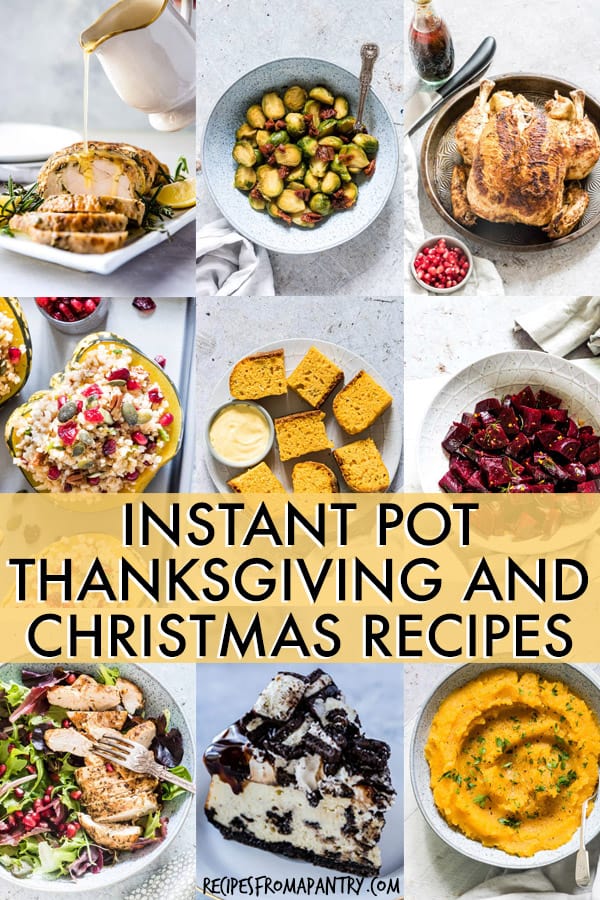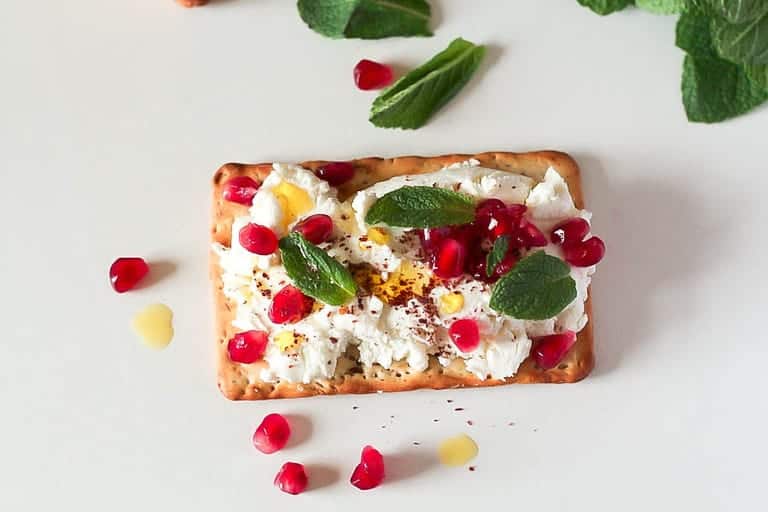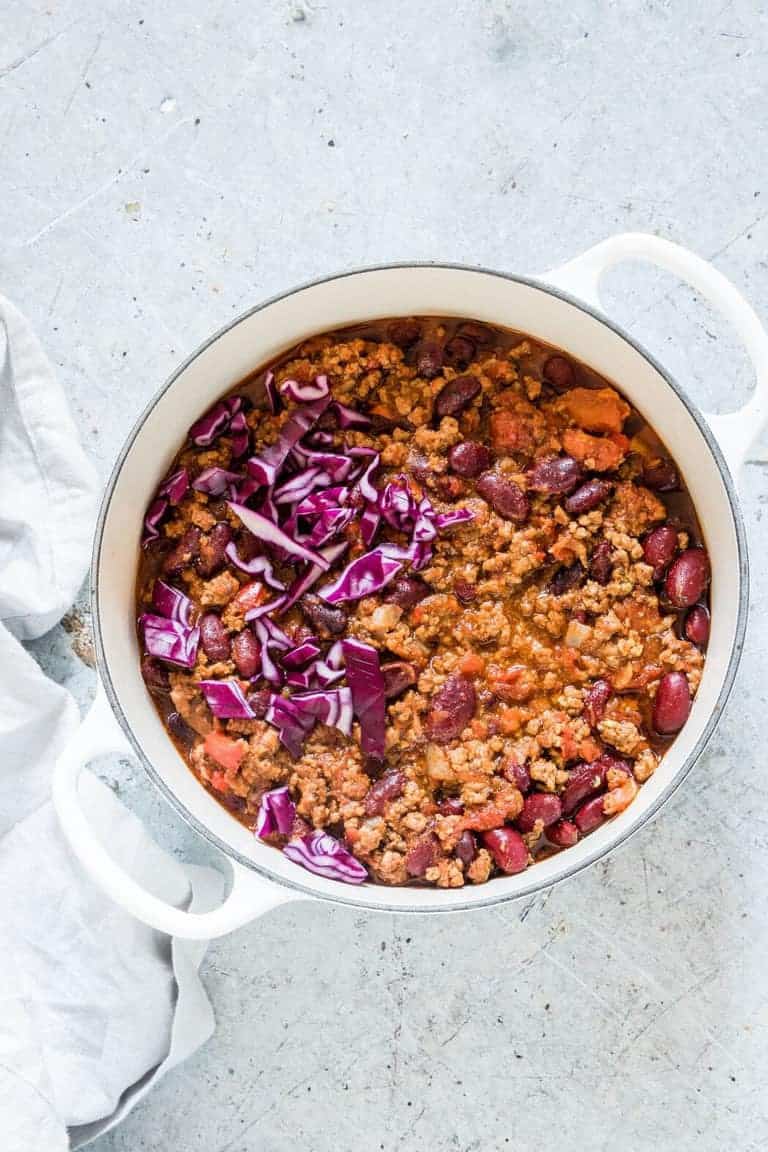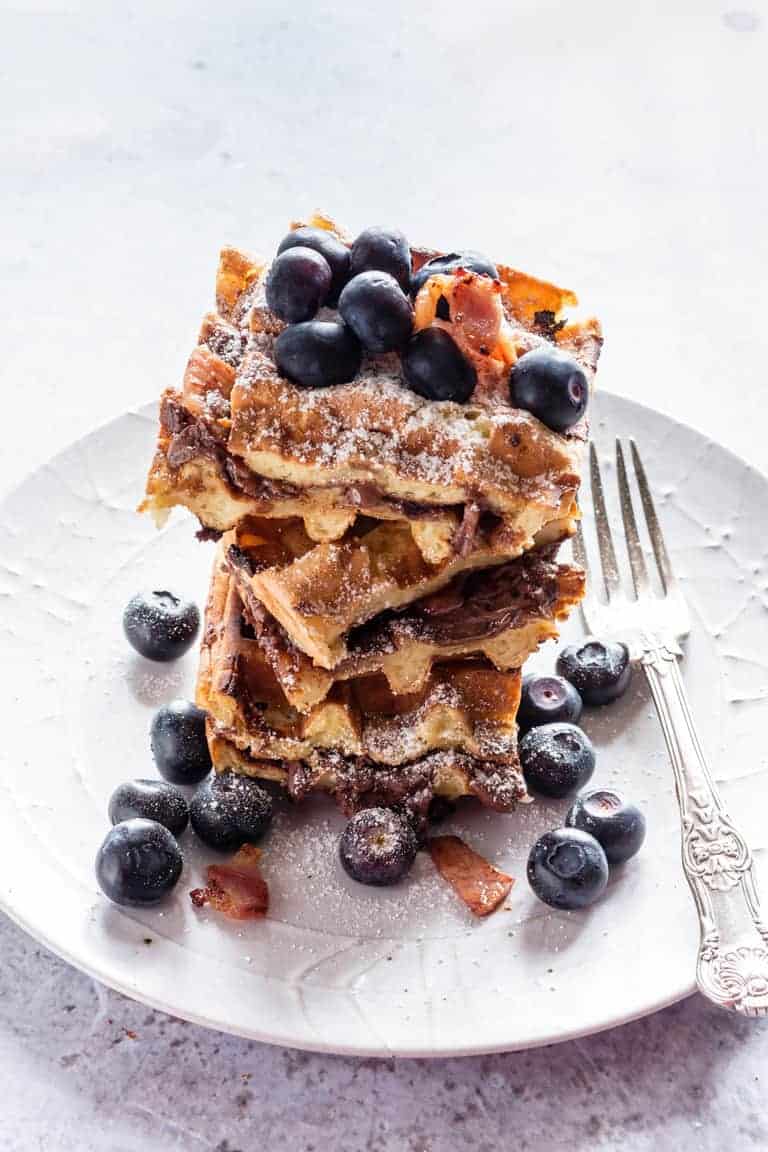What is a Casserole?
There are very few dishes that are as iconic and versatile as a casserole. You may be new to the world of casseroles and find yourself asking, “What is a casserole?” or maybe you are a seasoned casserole aficionado looking for some new inspiration. Either way, this post is for you!
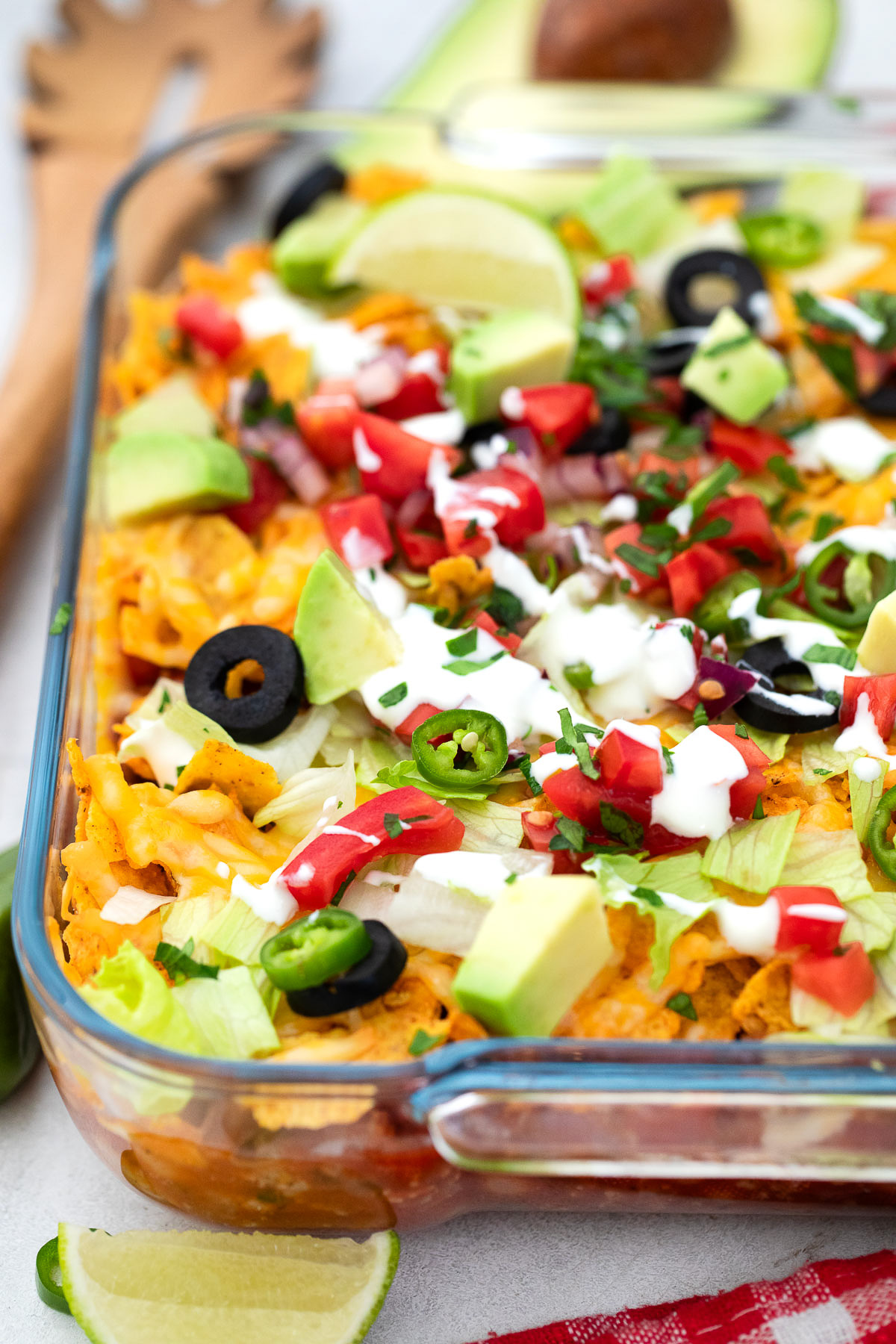
Let’s play a round of Culinary Jeopardy – here’s your answer: “Cheesy Tuna, or Ham and egg, or Chicken and broccoli.” Give up?? Question: “What is a casserole?” Yummy!
Ok, one more: “These food service items come in various shapes and sizes, and often have an accompanying lid or carrying case for transporting food.” If you said, “What is a casserole dish?” then you are correct!
Let’s take a closer look at casseroles and their dishes and find out what makes this one dish meal so popular.
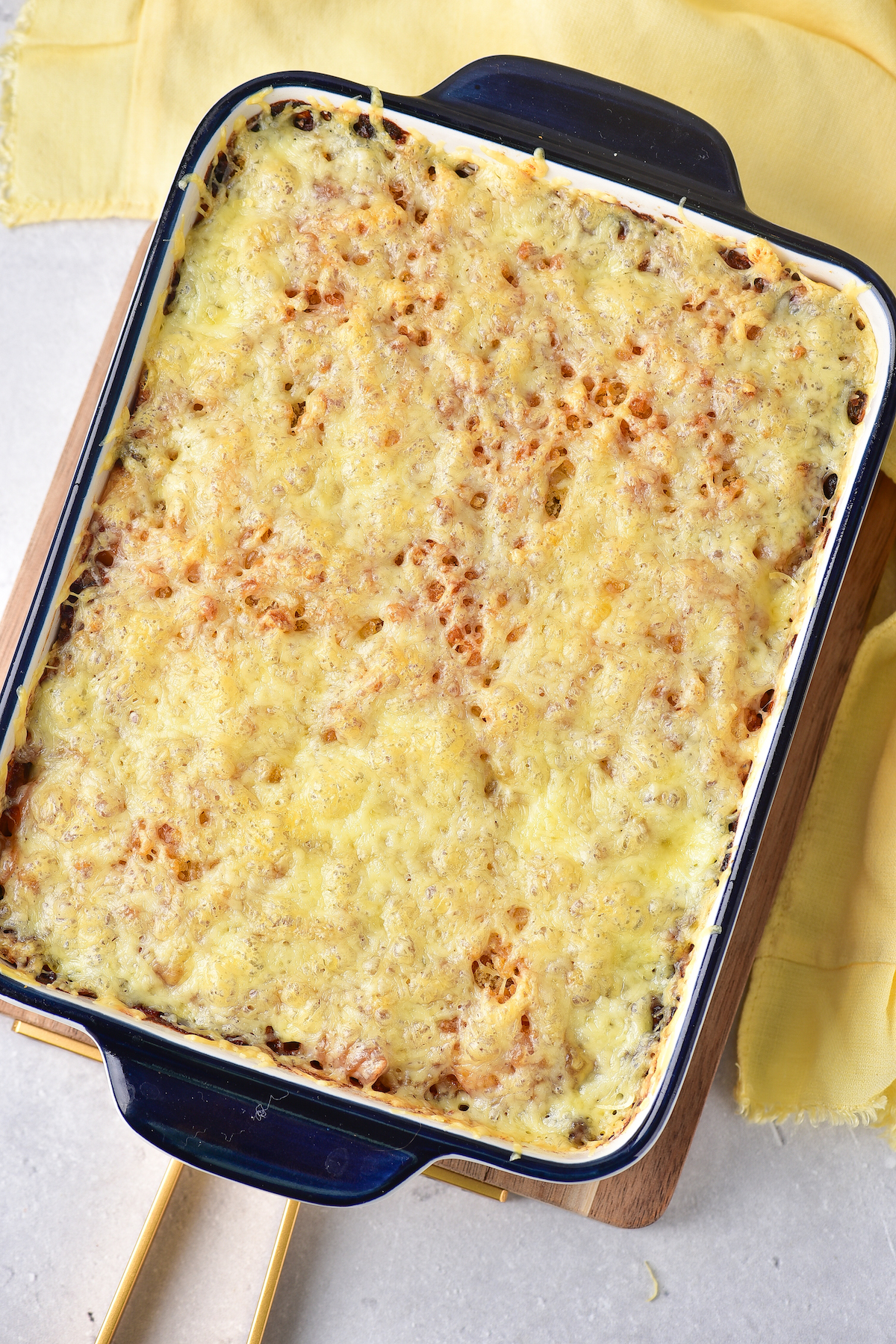
What is a Casserole?
At its most basic, a casserole is the essence of comfort and convenience. It brings together a variety of ingredients into the same dish that can be served as the main course, a savory side dish, or a sweet dessert, depending on your need.
The word casserole is derived from the French word casse which means pan. It has come to be known as a hot dish cooked in a large baking pan. Most casseroles contain a variety of ingredients in the same dish.
Casseroles have held a special place in communities all over the world with each neighborhood finding comfort in different recipes. From taking care of new moms, providing for sick friends, and warming the bellies of our families, casseroles have been served at our tables for decades.
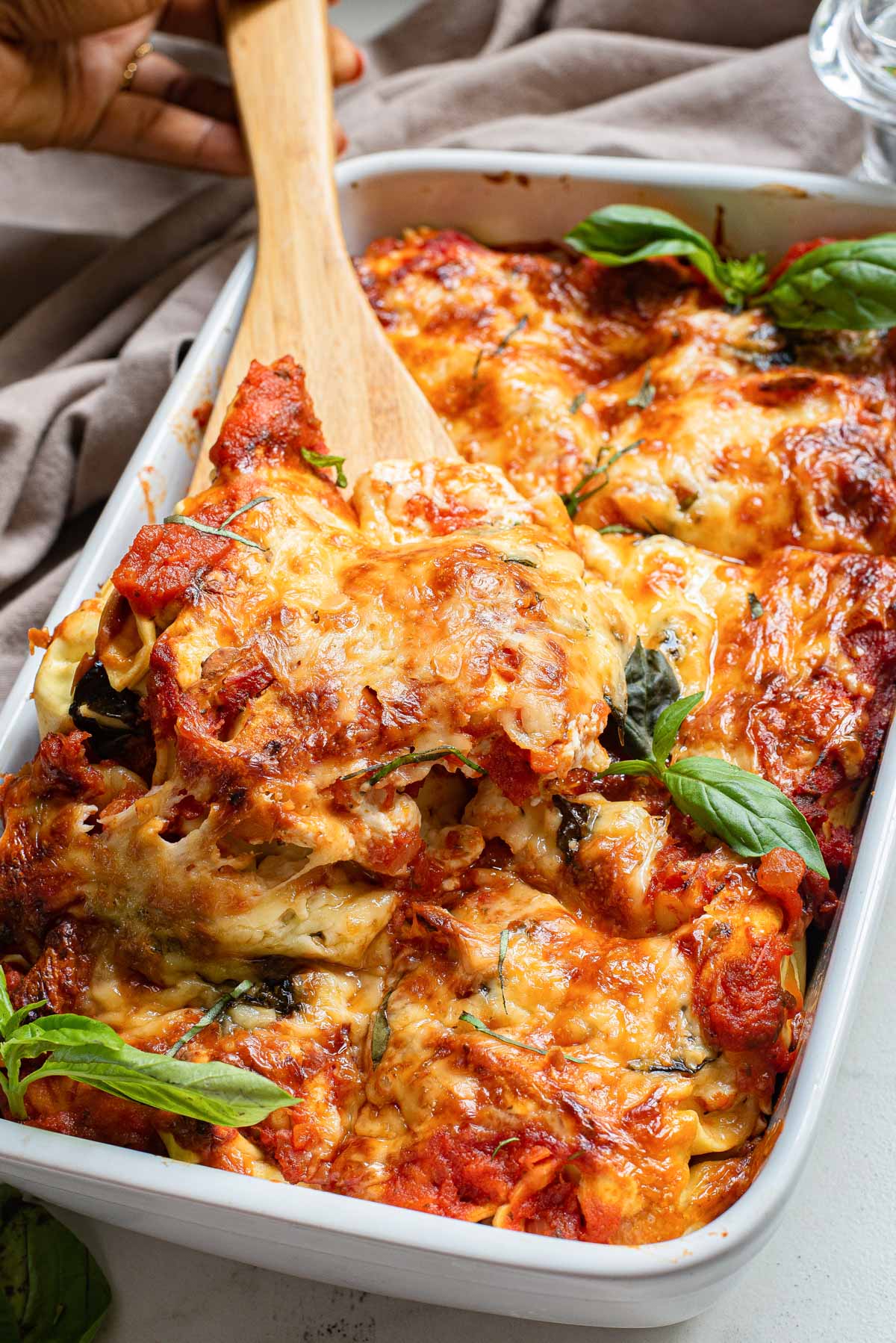
Why Are Casseroles So Popular
- They are easy — Casseroles take a couple of steps to get started, then you pop them in the oven. Pretty straightforward!
- They feed a crowd — It can be difficult to feed a crowd, but casseroles make it so much easier! Pre-portioning can ensure your food goes even further.
- They bring comfort — Tastes and smells bring comfort to our bodies and our souls. There’s nothing quite like the comfort food of a casserole!
- They are versatile — Casseroles are one of the most versatile cuisines, in my opinion. It’s the kind of recipe you can use as a suggestion. Missing something? No problem – use what you have!
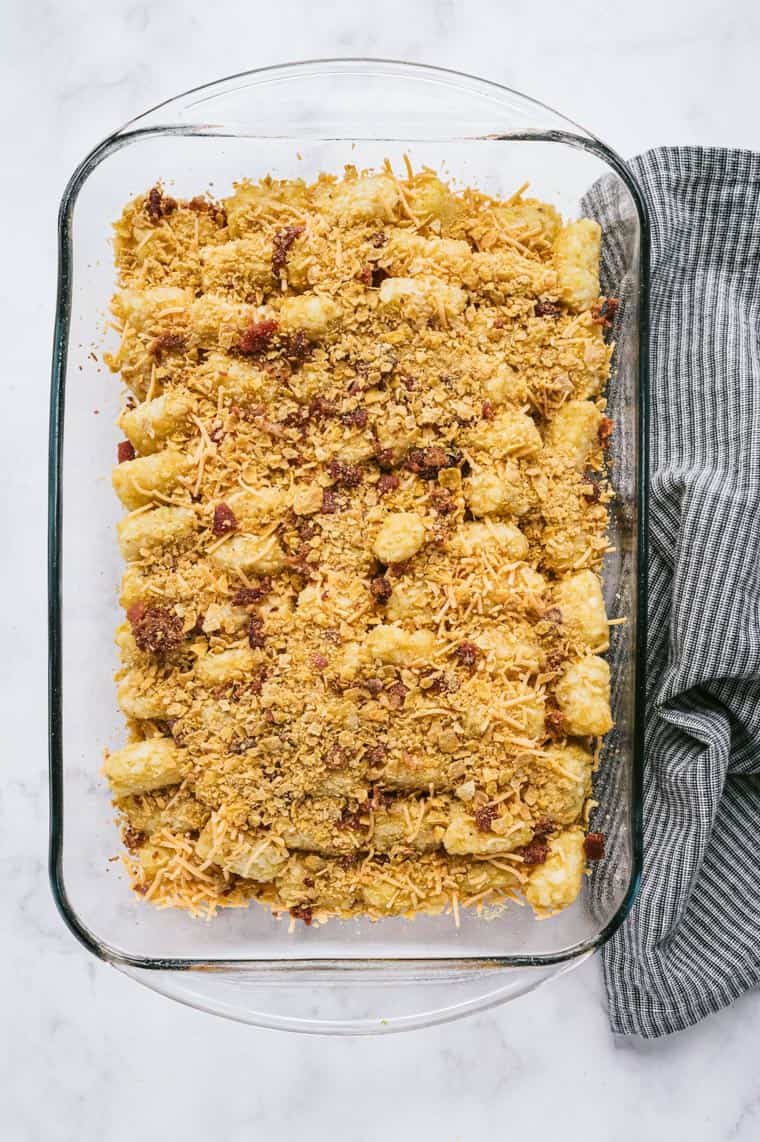
Recommended Tools
- Having casserole dishes in a variety of sizes means you can make any type of casserole recipe.
- A good set of mixing bowls helps you easily prepare your casserole filling.
- A variety of spices and seasonings is essential for adding flavor to casseroles.
- For the best tools to help make your recipe even easier and more successful, check out my collection of the Best Kitchen Tools on Amazon.
Top Casserole Recipes
Easy Tater Tot Casserole
This is not your regular Tater Tot Casserole recipe! This easy tater tot casserole is lightened up a bit by swapping canned cream soup for Greek yogurt. The addition of bacon and crisp cornflakes kicks up the flavor and crunch.
Walking Taco Casserole
Walking Taco Casserole is an ultimate comfort food delight! With layers of flavorful ground beef, gooey cheese, and the satisfying crunch of Fritos, this dish is a guaranteed winner for both weeknight dinners and lively gatherings alike.
Brioche French Toast Casserole
This Brioche French Toast Casserole is a decadent breakfast delight that combines the buttery brioche bread with the natural sweetness of bananas and the delightful crunch of caramelized cashew nuts.
John Wayne Casserole
Get ready for a flavor-packed adventure with John Wayne Casserole. This all-American beef and biscuit sensation is sure to rope in the hearts of your dinner guests.
Scalloped Corn Recipe
This Scalloped Corn recipe is a delicious southern recipe that is a true family favorite. Perfect for holiday gatherings, Sunday suppers, and bringing to potlucks.
Cornbread Casserole
Get ready to wrangle some serious flavor with this downright delicious Cornbread Casserole. Whether you’re craving a savory cowboy dinner or a zesty taco twist, this Jiffy-based recipe will become your new weeknight dinner go-to.
Baked Mac and Cheese
This irresistible and easy baked mac and cheese recipe is what true comfort food is all about. Featuring a blend of cheddar and gruyere cheeses, this delicious dish is perfect for serving as a hearty main dish or a satisfying side.
Taco Casserole
Love flavorful Tex-Mex food? Then you’ll love this easy to make Taco Casserole recipe! This zesty taco bake comes together quickly and is ready to serve in under 45 minutes.
Baked Tortellini Casserole - 5 Ingredients
Baked tortellini casserole has all the flavors you love in lasagna without all the work! Delicious baked cheese tortellini is comforting, and creamy, and can be prepared in a few minutes.
Easy Cheesy Tuna Casserole 2 Ways
Cheesy Tuna Casserole is an easy comfort food dinner you can whip up quickly using pantry staples. Learn two ways to prepare a classic tuna casserole that’s great for meal prep and freezer friendly too.
Green Bean Casserole Recipe
This flavorful and comforting Green Bean Casserole Recipe is easy to make in less than 30 minutes. It’s the perfect side dish for any meal!
Easy Chicken Broccoli Casserole
This easy Chicken Broccoli Casserole is super easy to prep ahead for easy weeknight dinners and meal prep!! It’s creamy, hearty, and filled with classic flavors the whole family will love.
Easy Corn Pudding Casserole
This Corn Pudding Casserole is a true southern comfort food staple. Fluffy, flavorful and versatile, corn pudding is the perfect dish for bringing to potlucks and packing on picnics since it can be enjoyed hot or cold!
Fish Casserole
A super easy gluten free baked Fish Casserole recipe which combines creamy mashed potatoes, lean fish and quick-cooking veggies into this classic comfort food.
Easy Sweet Potato Casserole Recipe
Sweet potato casserole is a classic Thanksgiving side dish. But why wait for the holidays? This sweet potato casserole recipe is so easy, you can make it any time of the year!
Ham Breakfast Casserole
Ham Breakfast Casserole is everything you love about breakfast tucked into one easy-to-make casserole.
Making casseroles is a great way to save time and money. Check out these casseroles for more flavorful ideas your family will love.
Common Casserole Ingredients
- Protein — Most main entree casseroles contain a protein source of some kind. Some examples are:
- Ground sausage
- Ground beef
- Leftover chicken or rotisserie chicken
- Ground turkey
- Canned Tuna – Tuna Casserole is an age-old favorite.
- Tofu
- Binder — Binders hold the casserole together. The binder used depends on what dish is being cooked. Some include:
- Eggs (They can also serve as the main protein in breakfast casseroles.)
- Grated Cheese
- Yogurt
- Sour cream
- Condensed cream soup or other canned soup
- Tomato sauce or paste
- Mayonnaise
- Add-ins — Casseroles typically have more than one main ingredient. That’s what makes them a casserole! Add-ins can be whatever you have lying around (if you’re feeling creative or missing an ingredient) or they can be very specific to your recipe. Here are some ideas:
- Red or green bell peppers
- Spinach
- Kale
- Chopped onions
- Frozen peas
- Frozen mixed vegetables
- Green beans – Green bean casserole is a classic Southern recipe.
- Broccoli
- Celery
- Potatoes
- Mushrooms
- French loaf cubes
- Croutons
- Toppings — Often a casserole will have a topping that complements the flavor profile of the dish. It may be a surprise to you the topping that a recipe calls for or that your culinary intuition suggests! Here are a handful of options:
- Brown sugar
- Cinnamon
- Maldon salt flakes
- Bread crumbs
- Ritz crackers
- Cheese
- Nuts
- Berries or dried fruit
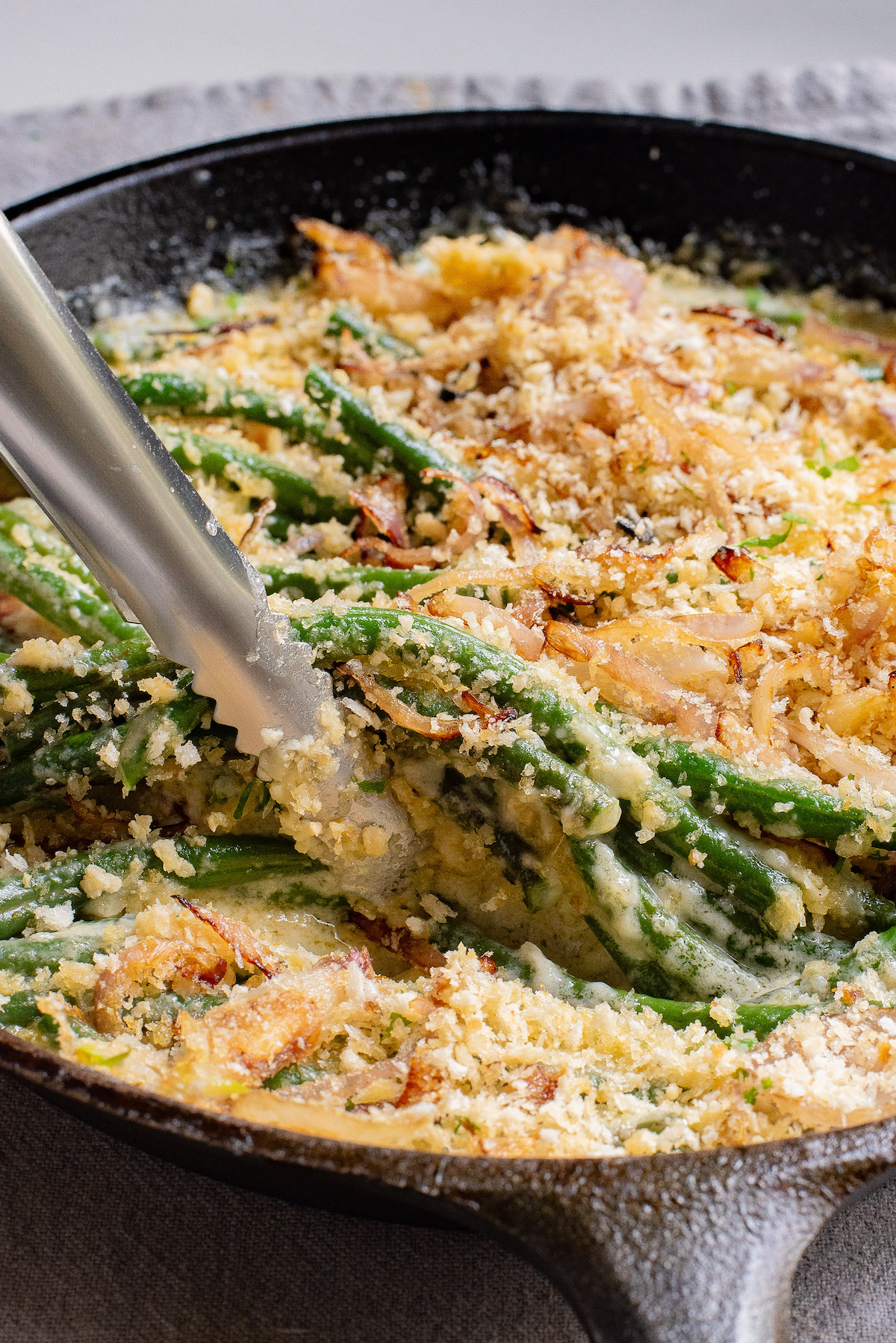
What is a casserole dish?
Because casseroles have become so popular, they have earned their very own dishes! Casseroles vary in shape, size, material, and decoration. Some are fluted while some are beveled. Others are ceramic while still others are stoneware, glass, or aluminum. There are even disposable casserole dishes!
For everyday use, materials like glass and aluminum are widely available. Ceramic and stoneware dishes are also very accessible and can elevate your everyday dinner to feel like an extra special moment. If you are delivering a meal, preparing a casserole for the freezer, or just reducing mealtime cleanup, disposable casserole dishes are the way to go.
Size is also something to consider when preparing your casserole. The most common sizes are 9×13 inches, 9×9 inches, 8×8 inches, and 7×11 inches. Inches indicate the dimension of the dish, however, another standard measurement for dishes is by volume.
You’ll see measurements like 3 quarts and 2.5 quarts also listed on the bottom of the casserole pan. A quick Google search can give you the dimension and volume measurements listed together if you need help figuring out which dish to use.
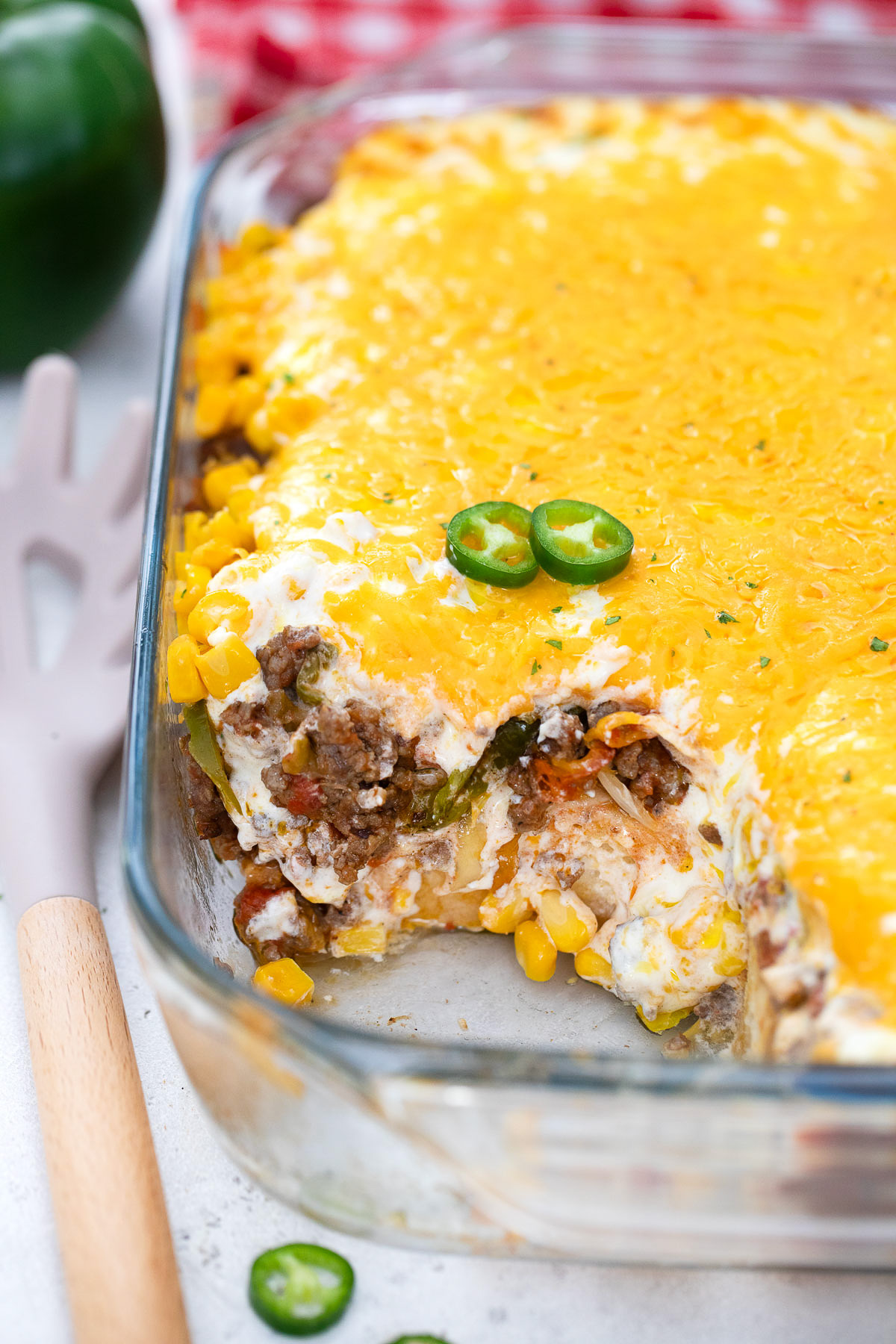
Handy Tip: Use Good Kitchen Tools!
For the best tools to help make your recipe even easier and more successful, check out my collection of the Best Air Fryer Tools on Amazon.
How to Freeze a Casserole
- Opt for a freezer-safe dish. Glass and ceramic dishes with airtight lids work well. This is also where disposable aluminum pans work well!
- Allow the casserole to cool to room temperature after baking. This helps prevent condensation, which can lead to ice crystals and freezer burn.
- Consider dividing the casserole into individual portions before freezing. This makes it easier to reheat only what you need. (If you choose to do this, it will mean smaller freezer-safe containers, so step 4 will be modified to loading said containers.)
- Cover the casserole with a layer of plastic wrap to prevent air from coming into contact with the food. Make sure the plastic wrap is in direct contact with the casserole’s surface. Then, wrap the dish with a layer of aluminum foil to create an extra barrier against freezer burn.
- Use a permanent marker to label the dish with the name of the casserole and the date it was prepared. This will help you keep track of what’s in your freezer and when it should be used.
- Place the wrapped casserole in the freezer. Ensure that it is laid flat to freeze evenly. If you’re freezing multiple casseroles, leave some space between them to allow for better airflow.
- While casseroles can technically be stored in the freezer for longer, it’s best to use them within 2-3 months to maintain optimal taste and texture.
- When you’re ready to enjoy your frozen casserole, transfer it to the refrigerator to thaw for 24 hours or more. You can then reheat it in the oven or microwave, whichever you prefer.
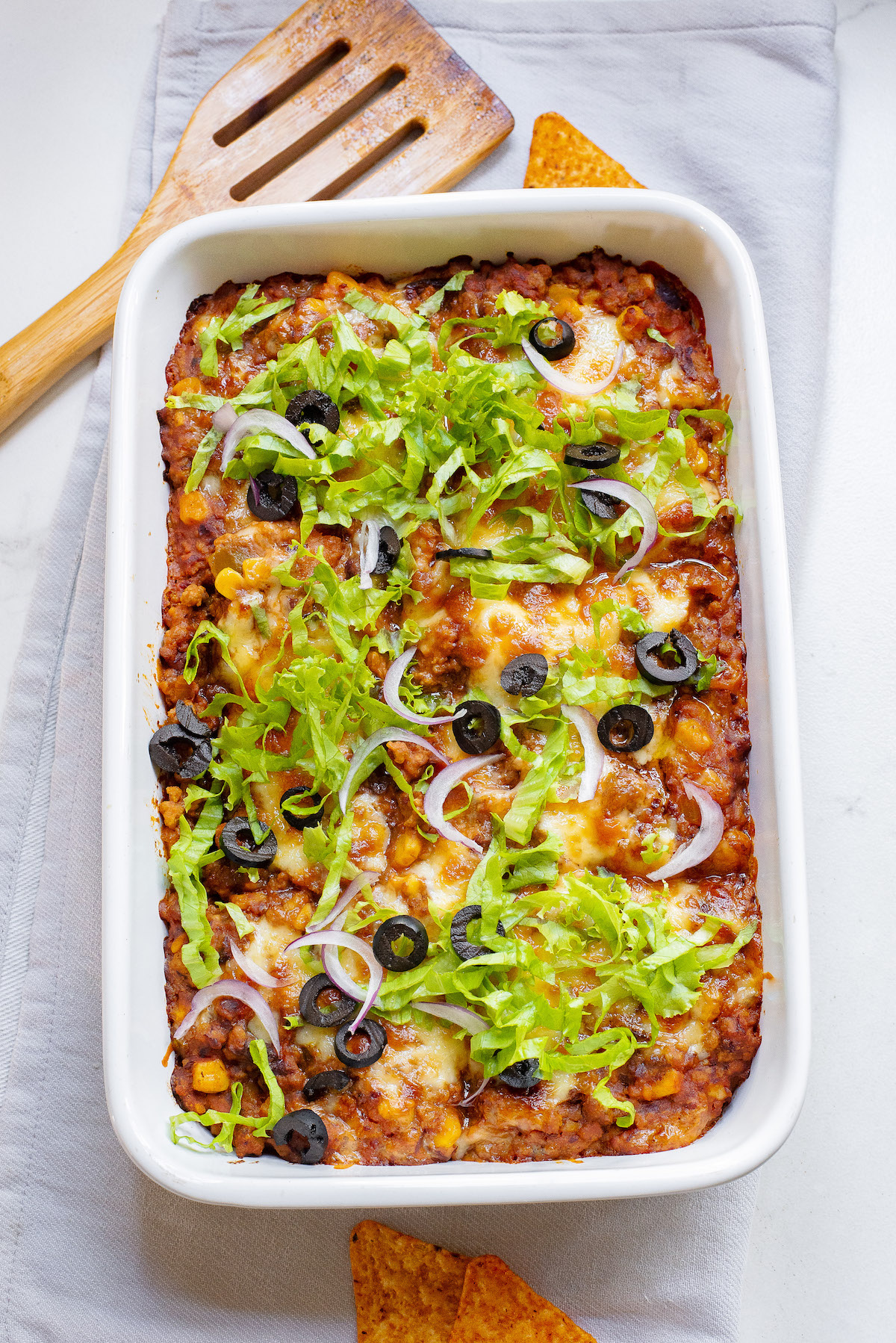
Expert Tips
- Having all your ingredients prepped and ready is crucial for efficient casserole-making. Chop vegetables, cook meat, and measure out other components before you start assembling.
- When layering ingredients, consider the order in which they should be placed. Starchy items like pasta or rice often work well as a base, followed by proteins, vegetables, and then any binder or sauce.
- Feel free to swap ingredients to suit your preferences or dietary needs. If you like a bit of heat, add some chili flakes. If you’re vegetarian, use plant-based proteins.
- It’s essential not to overcrowd your dish. Leave some space at the top, especially if you are planning to freeze your casserole or if your casserole will expand during cooking.
- When using cheese, select the appropriate type for your casserole. Melting cheeses like cheddar or mozzarella are great for topping, while Parmesan or Gruyère can add depth of flavor to the layers.
- Be mindful of moisture levels. If you’re using watery vegetables like zucchini or spinach, consider squeezing out excess liquid to prevent a soggy casserole.
- Covering the casserole with foil during part of the baking time can prevent excessive browning or drying out, especially if there are delicate ingredients on top.
- Allow the casserole to rest for a few minutes after baking. This helps it set and makes it easier to cut and serve.
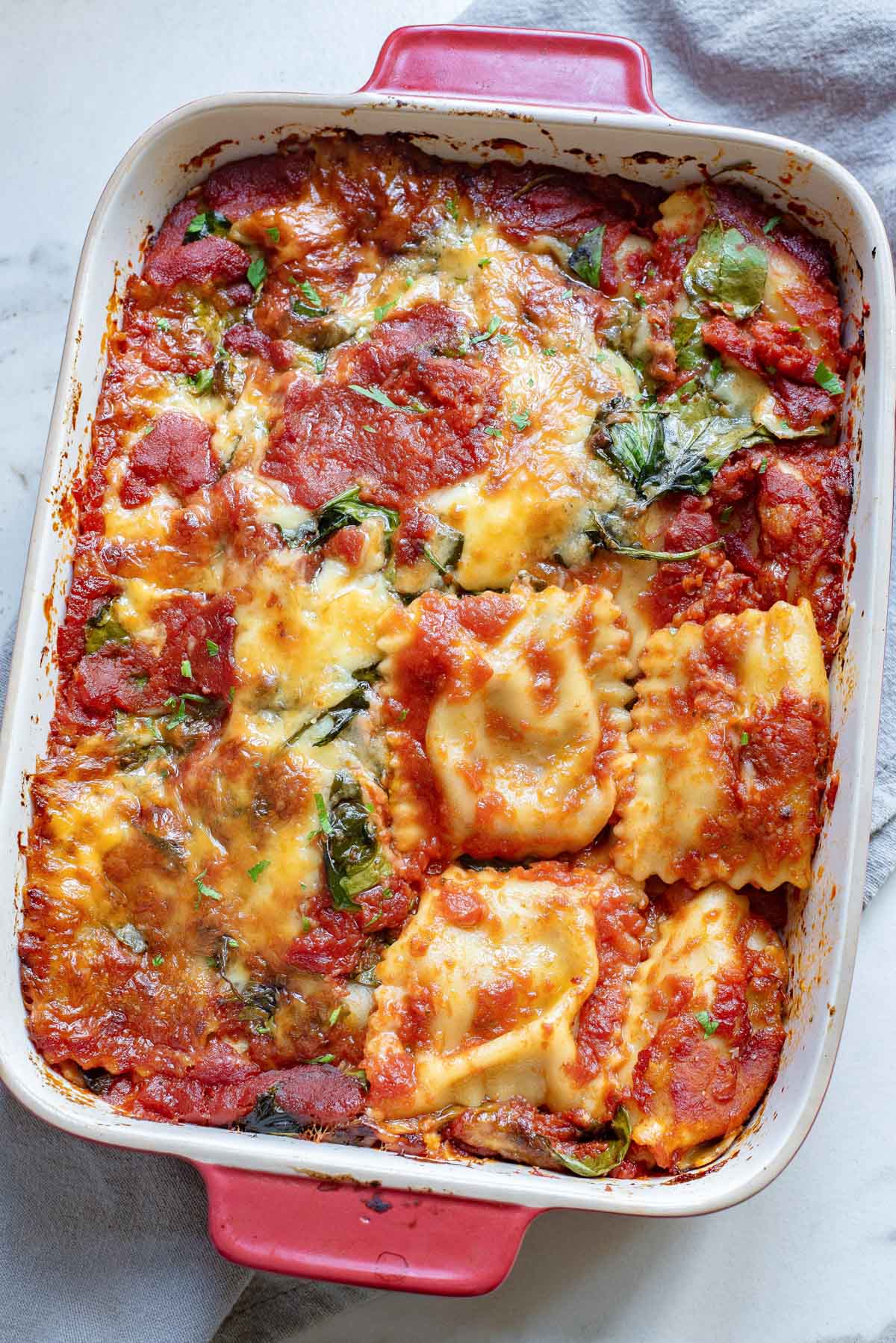
FAQs
Yes! That’s the beauty and appeal of casseroles. Whether you make them for yourself or someone else, casseroles are the perfect make-ahead meal!
Casseroles come in all shapes and sizes, the most common being 9×13 inches. 9×9, 8×8, and 7×11 are also useful sizes to have around.
There are about 3 quarts in a 9×13 casserole dish.
Technically, yes, lasagna is a casserole. Casseroles are made by mixing and layering various ingredients in a single dish. Even though the origin of lasagna is specific to Italy, the basic preparation aligns with a casserole.
If you have hand-me-down pans or baking dishes that are missing dimensions, you can tell their capacity with a simple trick. Fill the baking dish with water, keeping track of how many cups you pour in. When you’ve finished, you’ll know the capacity of your dish!
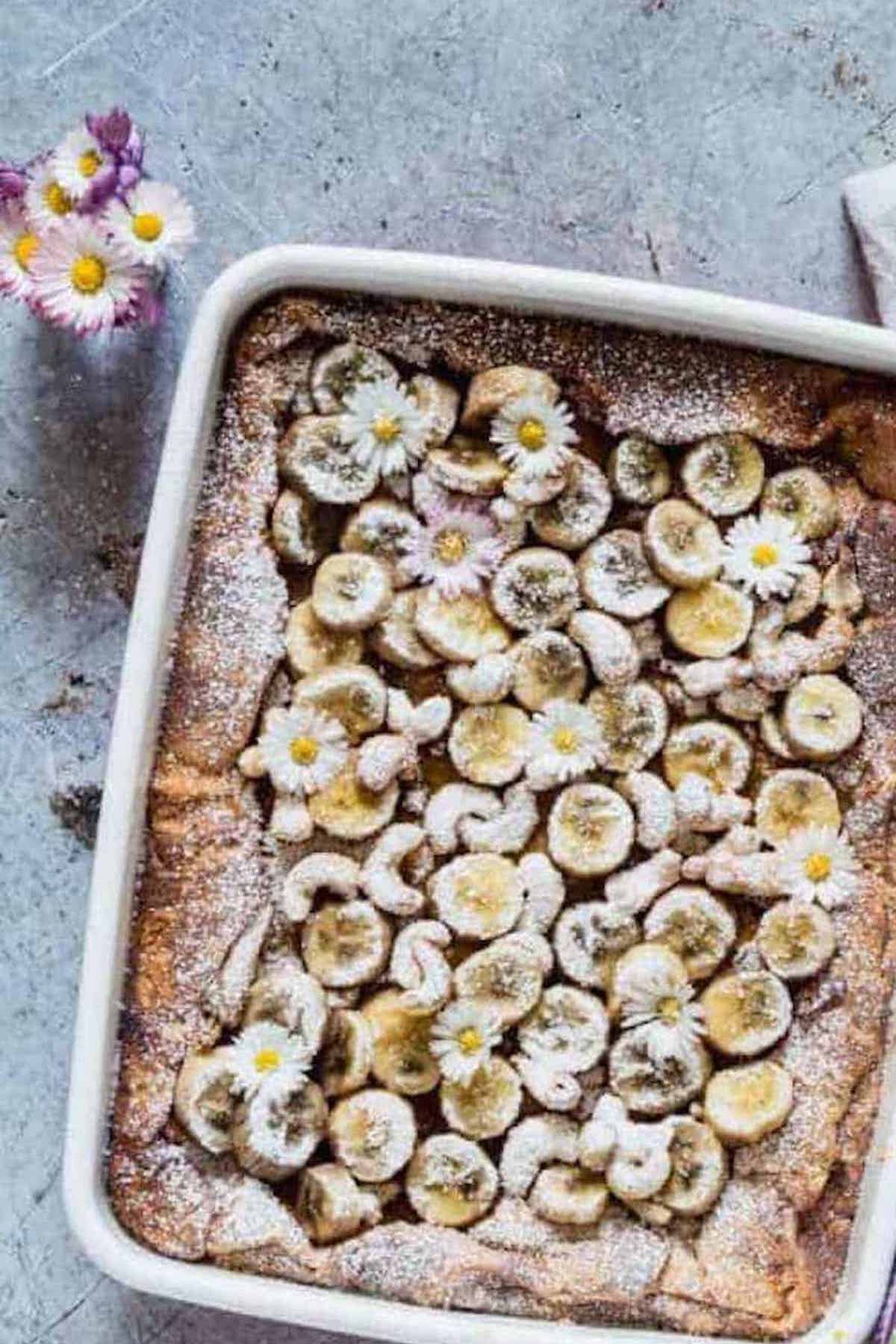
More Casserole Recipes You May Like
Looking for more EASY, delicious, and flavorful casserole recipes? Then be sure to check out my full collection of casserole recipes.
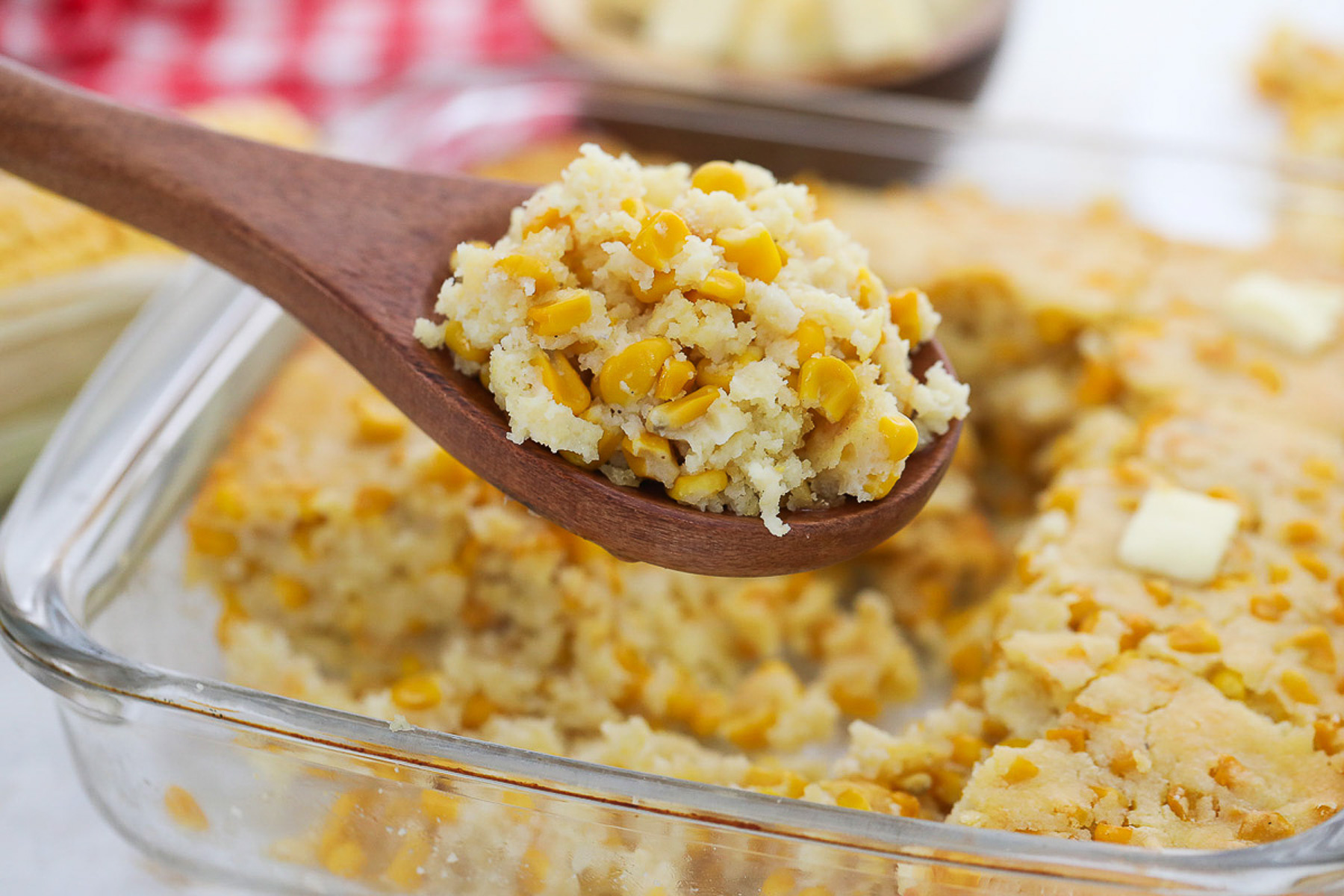
Thank you for reading my what’s a casserole recipe post. And please come visit again as I continue to slice, dice and dream up affordable Air Fryer recipes, Instant Pot recipes, Southern Recipes, and more. Thanks for supporting Recipes from a Pantry, food blog.
Don’t forget to tag #recipesfromapantry on Instagram or Twitter if you try How To Freeze A Casserole! It is really, really awesome for me when you make one of my recipes and I’d love to see it. You can also share it on my Facebook page. Please pin this recipe to Pinterest too! Thank you for reading Recipes from a Pantry.
How To Freeze A Casserole
Instructions
- Opt for a freezer-safe casserole dish. Glass and ceramic dishes with airtight lids work well. This is also where disposable aluminum pans work well!
- Allow the casserole to cool to room temperature after baking. This helps prevent condensation, which can lead to ice crystals and freezer burn.
- Consider dividing the casserole into individual portions before freezing. This makes it easier to reheat only what you need. (If you choose to do this, it will mean smaller freezer safe containers so step 4 will be modified to loading said containers.)
- Cover the casserole with a layer of plastic wrap to prevent air from coming into contact with the food. Make sure the plastic wrap is in direct contact with the casserole’s surface. Then, wrap the dish with a layer of aluminum foil to create an extra barrier against freezer burn.
- Use a permanent marker to label the dish with the name of the casserole and the date it was prepared. This will help you keep track of what’s in your freezer and when it should be used.
- Place the wrapped casserole in the freezer. Ensure that it is laid flat to freeze evenly. If you’re freezing multiple casseroles, leave some space between them to allow for better airflow.
- While casseroles can technically be stored in the freezer for longer, it’s best to use them within 2-3 months to maintain optimal taste and texture.
- When you’re ready to enjoy your frozen casserole, transfer it to the refrigerator to thaw for 24 hours or more. You can then reheat it in the oven or microwave, whichever you prefer.
Notes
- Having all your ingredients prepped and ready is crucial for efficient casserole-making. Chop vegetables, cook meat, and measure out other components before you start assembling.
- When layering ingredients, consider the order in which they should be placed. Starchy items like pasta or rice often work well as a base, followed by proteins, vegetables, and then any binder or sauce.
- Feel free to swap ingredients to suit your preferences or dietary needs. If you like a bit of heat, add some chili flakes. If you’re vegetarian, use plant-based proteins.
- It’s essential not to overcrowd your dish. Leave some space at the top, especially if you are planning to freeze your casserole or if your casserole will expand during cooking.
- When using cheese, select the appropriate type for your casserole. Melting cheeses like cheddar or mozzarella are great for topping, while Parmesan or Gruyère can add depth of flavor to the layers.
- Be mindful of moisture levels. If you’re using watery vegetables like zucchini or spinach, consider squeezing out excess liquid to prevent a soggy casserole.
- Covering the casserole with foil during part of the baking time can prevent excessive browning or drying out, especially if there are delicate ingredients on top.
- Allow the casserole to rest for a few minutes after baking. This helps it set and makes it easier to cut and serve.

